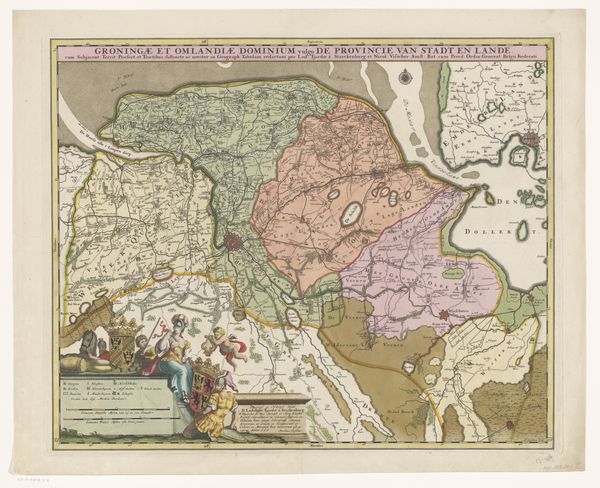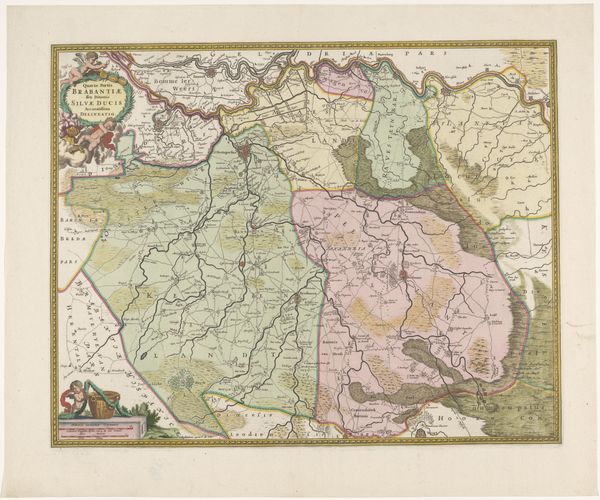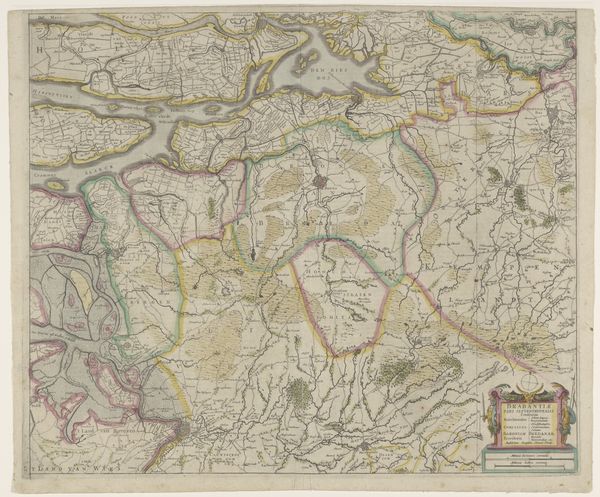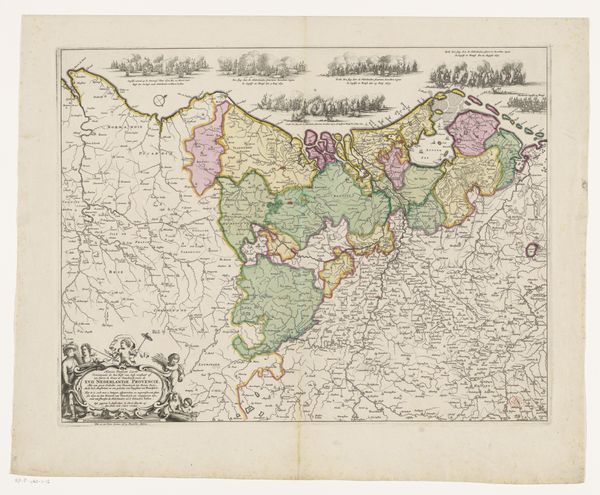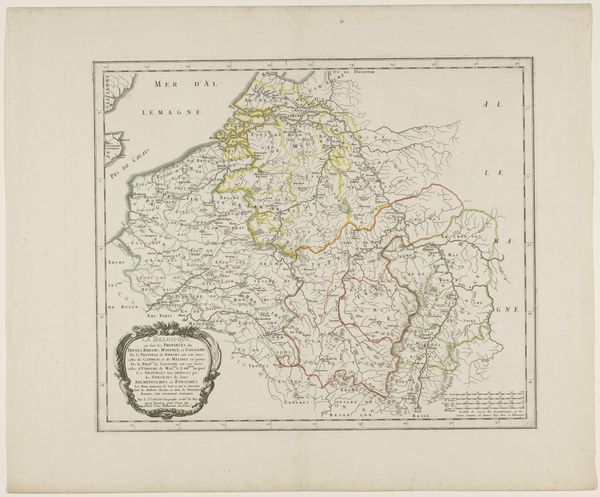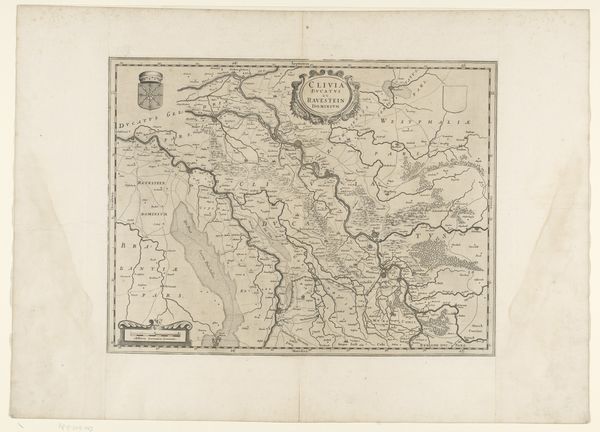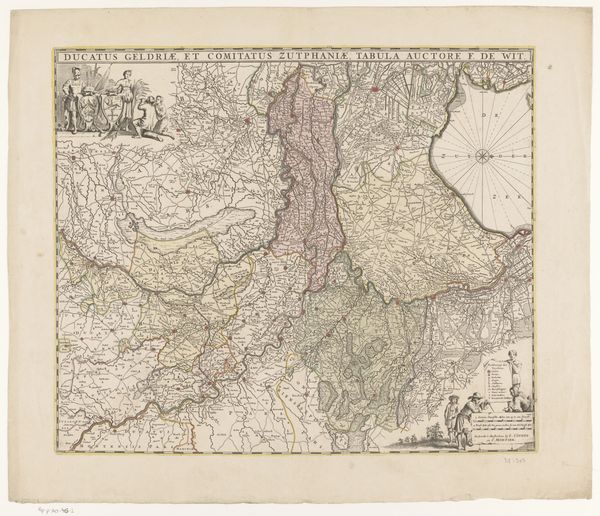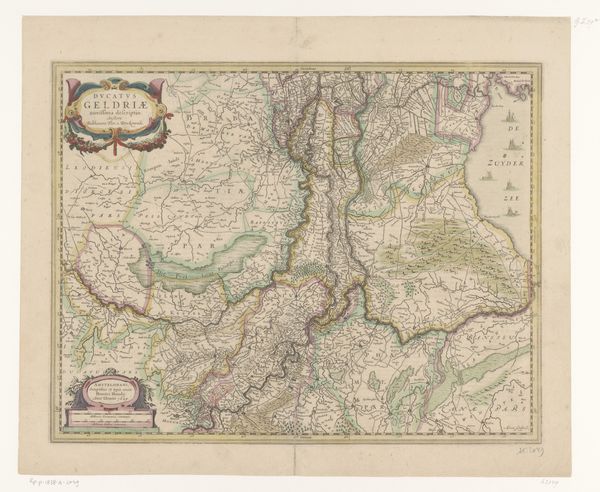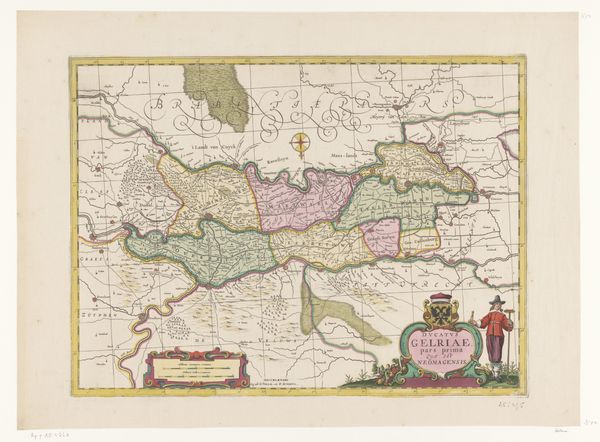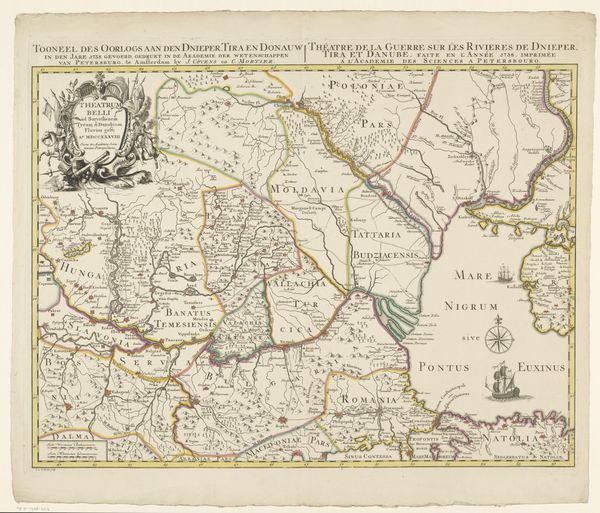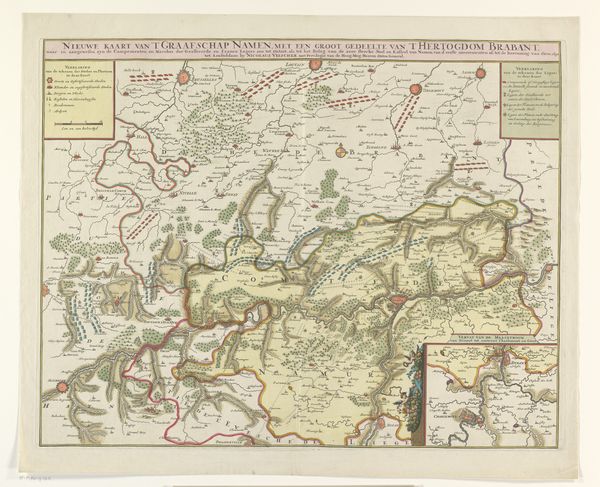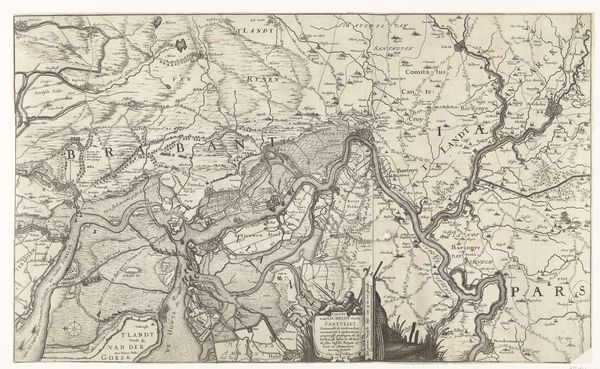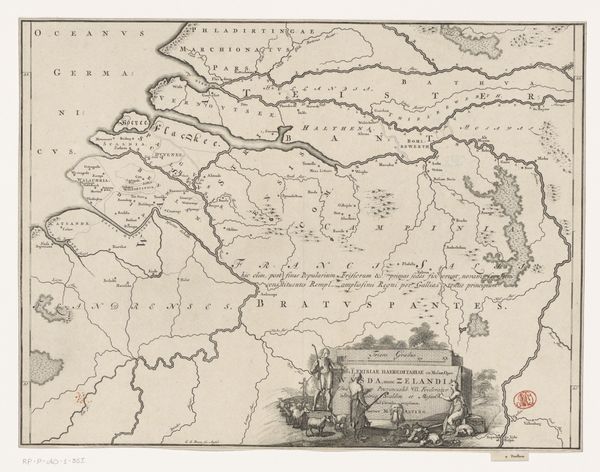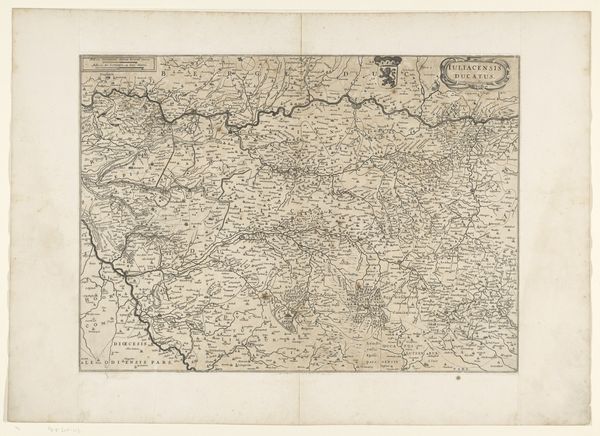
Ethnographic Map of the Indian Tribes of the United States 1849 - 1855
0:00
0:00
drawing, paper, ink, pen
#
drawing
#
paper
#
ink
#
pen
#
watercolor
Dimensions: 9 × 12 in. (22.9 × 30.5 cm) (image)9 11/16 × 12 7/8 in. (24.6 × 32.7 cm) (sheet)17 9/16 × 21 1/2 × 1 1/8 in. (44.6 × 54.6 × 2.9 cm) (outer frame)
Copyright: Public Domain
Seth Eastman made this Ethnographic Map around 1850, using watercolor and ink on paper. These were typical materials for the production of maps at the time, but this example carries a strong social charge. Eastman was a military officer, and his artistic skill was often used for documentation. Here, he delineates the territories of different Native American tribes, using a delicate hand to apply washes of color. Look closely, and you'll see that the map is overlaid with a grid, a symbol of imposed order, and a tool of colonial power. The very act of mapping is a form of taking possession, and this map reflects the U.S. government's agenda of claiming land. Eastman’s expertise was deployed as a tool of dispossession. By understanding the materials and the context, we can see how this object transcends its apparent function, and becomes a potent symbol of cultural conflict.
Comments
minneapolisinstituteofart almost 2 years ago
⋮
This map of Native languages is based on one by Albert Gallatin (1761-1849), a geographer and diplomat who was the first to classify these linguistic boundaries, in 1826. The vivid colors (Minnesota is pink) are especially well preserved. Map-making had always been Seth Eastman’s love. He even wrote a textbook on topographical drawing used at West Point, his alma mater. This watercolor, one of 35 works on paper by Eastman in Mia’s collection, was the basis for an illustration in Henry Rowe Schoolcraft’s massive "Historical and Statistical Information Respecting the History, Condition, and Prospects of the Indian Tribes of the United States" (Philadelphia: Lippincott, Grambo & Co., 1851-57).
Join the conversation
Join millions of artists and users on Artera today and experience the ultimate creative platform.
